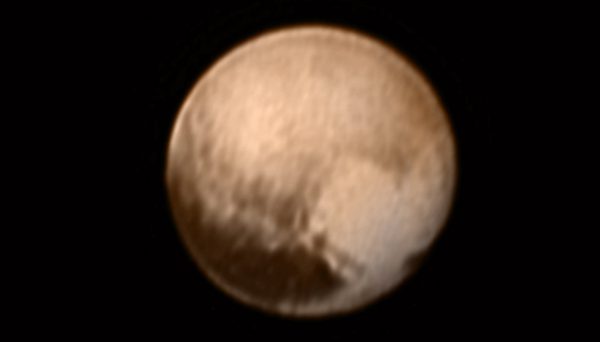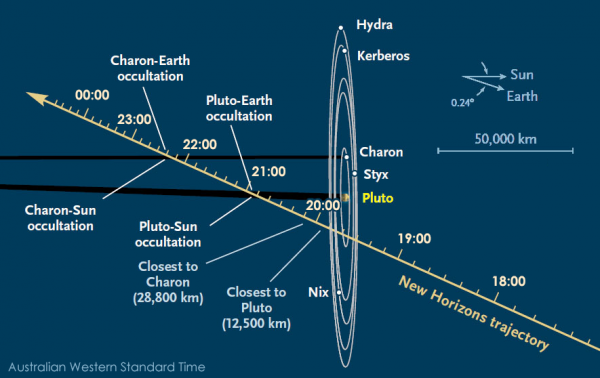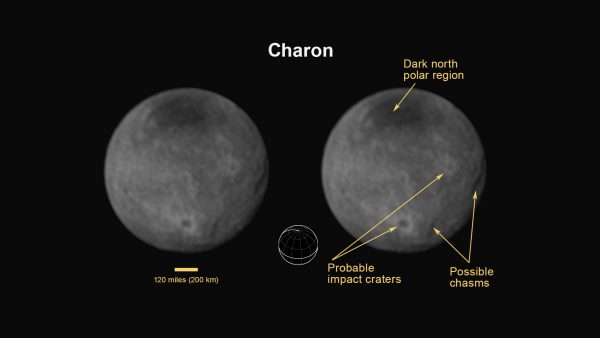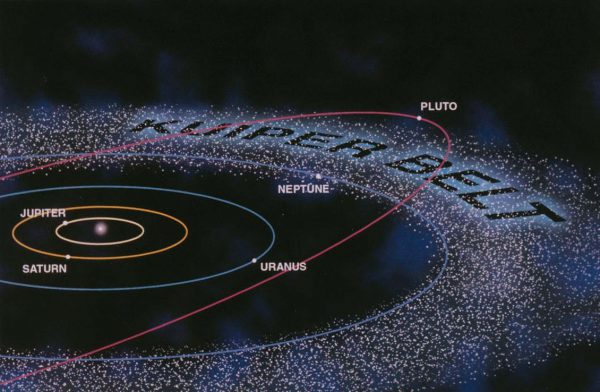Pluto – For most of its life, it has been considered the runt of The Solar System family.

That odd little ball way, way out in the furthest reaches of The Solar System that slowly makes its journey around the Sun every 248 Earth years and for a long time was too hard to send a space probe to. I guess that’s why it’s always been the favourite of kids around the world and mine too.
But this all changes on Tuesday the 14th of July at 19:50pm AWST, when NASA’s fastest spacecraft New Horizons, launched back in 2006, will have its closest approach and flyby of Pluto reaching just 12,500km above the planet’s surface. With its RALPH telescope, New Horizons will take some of the most detailed images ever taken of a planet, and its already has taken some tantalising images from its LORRI navigational camera for over a month now.

NASA’s New Horizons mission goals when it arrives at Pluto are to understand the formation of the Pluto system including the Kuiper Belt, a belt of icy bodies beyond the orbit of Neptune, and the transformation of the early Solar System. The probe will also study the atmospheres, surfaces, interiors and environments of Pluto and its moons Charon (the largest, with a diameter just over half that of Pluto), Styx, Nix, Kerberos, and Hydra.
New Horizons has been built to take and store large amounts of data as it flies through the Plutonian System at 13.8 km per second. The piano-shaped probe can make the most of the short time it has at Pluto as it has the capability for up to five of its seven science instruments to operate at the same time while storing the data logged into its two large hard drives. This means New Horizons will gather close to 100x as much data during the flyby as it will send back to Earth.

The probe has a small communications dish (to save weight) and due to the fact that it has to share NASA’s Deep Space Communication Network, it will take a year to get all the data and discoveries from the flyby sent back to Earth. So NASA has one hell of a year in store for us, starting 24 hours after the flyby when, due to the distance between Pluto and Earth, we’ll receive hopefully the first close up image from the probe.
Once New Horizons has flown past Pluto it will continue on for the next three years to study objects in the Kuiper Belt a large belt of icy objects left over from the formation of The Solar System which was discovered in 1992 before travelling towards the edge of the Solar System.

If you would like to find out the latest news on the Pluto flyby this coming Tuesday night, we’ll be posting updates on our Facebook page as well as live-tweeting on our Twitter page.
In an astronomical version of six degrees of Kevin Bacon, Pluto was discovered by Clyde Tombaugh in 1930 at the Lowell Observatory in Flagstaff, Arizona. In the 1970s that same observatory gave The Perth Observatory our largest telescope the 24 inch Lowell Telescope. We’re hoping to have it up and running again for special star viewing nights throughout our upcoming star viewing season which starts in late September.
Originally posted as a TweetPerth article: New Horizons Pluto FlyBy





